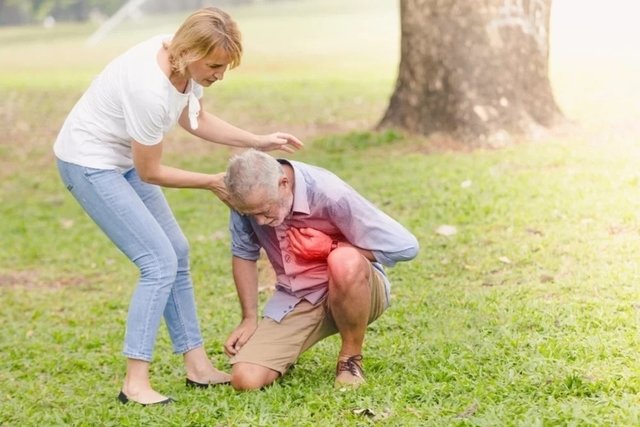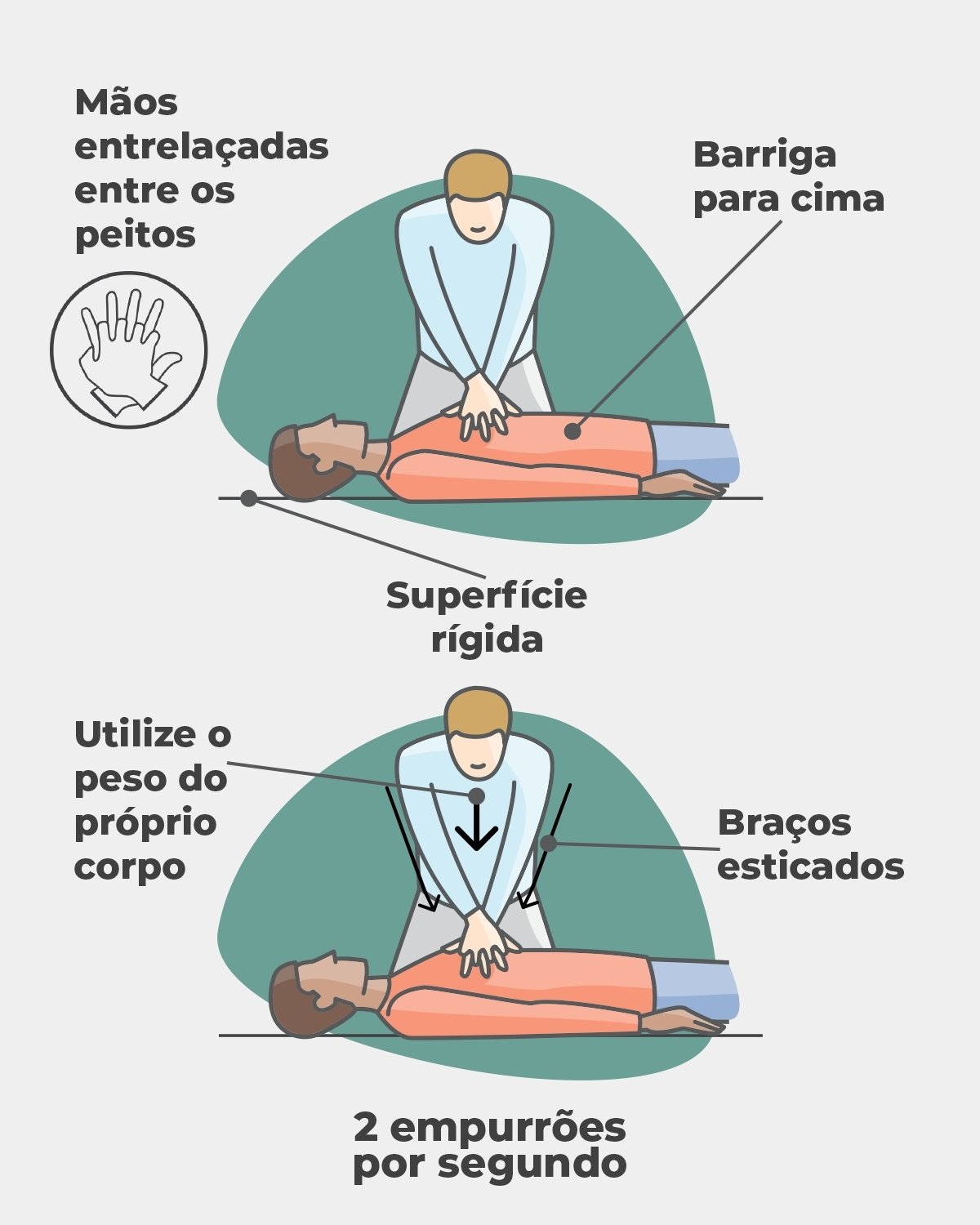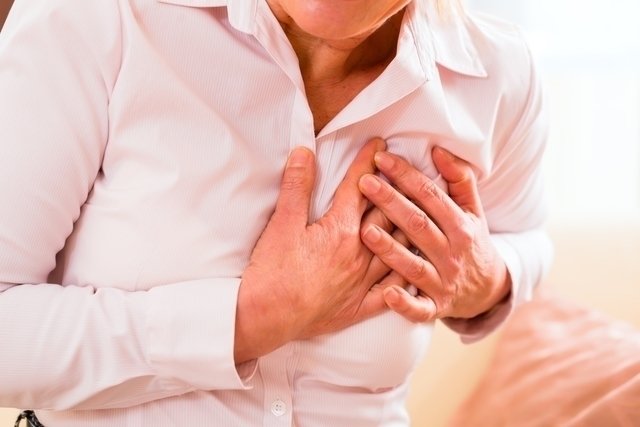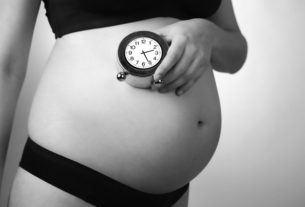The main symptoms of cardiac arrest are:
- Severe chest pain that gets worse or radiates to the back, arms or jaw;
- Shortness of breath or difficulty breathing;
- Difficulty speaking clearly;
- Tingling in the left arm;
- Frequent dizziness and excessive tiredness;
- Nausea and stomach pain;
- Cold sweats.
When several of these signs appear, there is a greater risk of cardiac arrest and, therefore, it is important to go to the emergency room immediately or call an ambulance. If a person faints, it is important to assess whether they are breathing. If the person is not breathing, cardiac massage should begin.
Cardiac arrest can also be known as cardiorespiratory arrest or sudden cardiac arrest and happens when the heart stops beating. See more about cardiac arrest.

Why can stomach pain happen?
Some people with heart problems may have stomach pain, indigestion or heartburn. Decreased blood flow to the heart can lead to pain or pressure that radiates to the upper abdomen, which can be mistaken for stomach pain. This happens because a nerve from the central nervous system supplies several organs in the body, branching into the heart and stomach.
To differentiate the symptoms, gastric changes are usually accompanied by belching, abdominal bloating and excess gas, while in cardiac changes there is a feeling of tightness in the chest, shortness of breath and pain in the arms or jaw, for example.
First aid for cardiac arrest
In cases where a person presents symptoms of cardiac arrest and then faints, it is advised:

- Call an ambulancecalling 192;
- Assess whether the person is breathingplacing your face close to your nose and mouth to listen to the sounds of breathing and, at the same time, looking at your chest to see if it is rising and falling:
- If there is breathing: place the person in a lateral safety position, wait for medical help to arrive and regularly check breathing;
- If there is no breathing: turn the person face up on a hard surface and start cardiac massage.
- For do cardiac massage:
- Place both hands in the center of your chest with fingers intertwined, at the midpoint between the nipples;
- Do compressions while keeping your arms straight and pushing the chest down until the ribs drop about 5 cm;
- Maintain compressions until medical help arrives at a rate of 2 compressions per second.
Mouth-to-mouth breathing can be done every 30 compressions, taking 2 inhalations into the victim’s mouth. However, this step is not necessary and can be ignored if the victim is an unknown person or does not feel comfortable breathing. If mouth-to-mouth breathing is not performed, compressions must be performed continuously until the medical team arrives.
Who is most at risk of cardiac arrest
Although it can happen without an apparent cause, cardiac arrest is more common in people with heart diseases, such as:
- Coronary heart disease;
- Cardiomegaly;
- Untreated malignant cardiac arrhythmia;
- Heart valve problems.
Furthermore, the risk of cardiac arrest is also higher in people who smoke, have a sedentary lifestyle, have uncontrolled high blood pressure or use illicit substances.
Here’s how to reduce your risk of suffering a cardiac arrest.
Sequelae of cardiac arrest
The main consequence of cardiac arrest is death, however, cardiac arrest does not always leave consequences, as they are more frequent in victims who have had no heartbeat for a long time, as it is the heartbeats that carry oxygen through the blood to everyone. organs, including the brain.
Therefore, if the victim is treated quickly, there is a lower probability of sequelae occurring, but this will also depend on health in general. Some victims of cardiac arrest may have sequelae such as neurological changes, difficulty speaking and memory changes.
Bibliography
- HEART FOUNDATION. Cardiac arrest. Disponível em: <https://www.heartfoundation.org.nz/your-heart/heart-conditions/cardiac-arrest>. Acesso em 27 nov 2020
- NATIONAL HEART, LUNG AND BLOOD INSTITUTE. Sudden Cardiac Arrest. Available at: <https://www.nhlbi.nih.gov/health-topics/sudden-cardiac-arrest>. Accessed on November 27, 2020
- STATPEARLS. Cardiac Arrest. 2020. Available at: <https://www.ncbi.nlm.nih.gov/books/NBK534866/>. Accessed on November 27, 2020

Sign up for our newsletter and stay up to date with exclusive news
that can transform your routine!
Warning: Undefined array key "title" in /home/storelat/public_html/wp-content/plugins/link-whisper-premium/templates/frontend/related-posts.php on line 12
Warning: Undefined array key "title_tag" in /home/storelat/public_html/wp-content/plugins/link-whisper-premium/templates/frontend/related-posts.php on line 13





